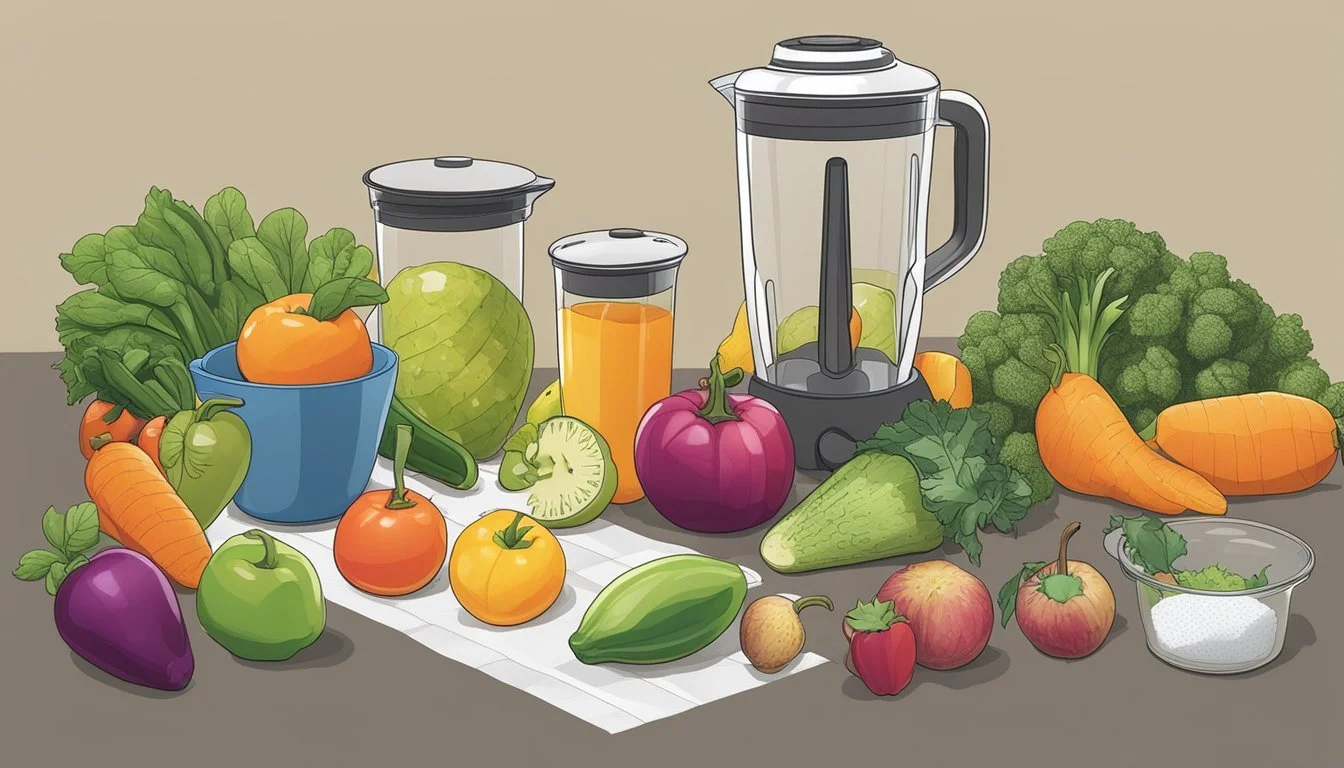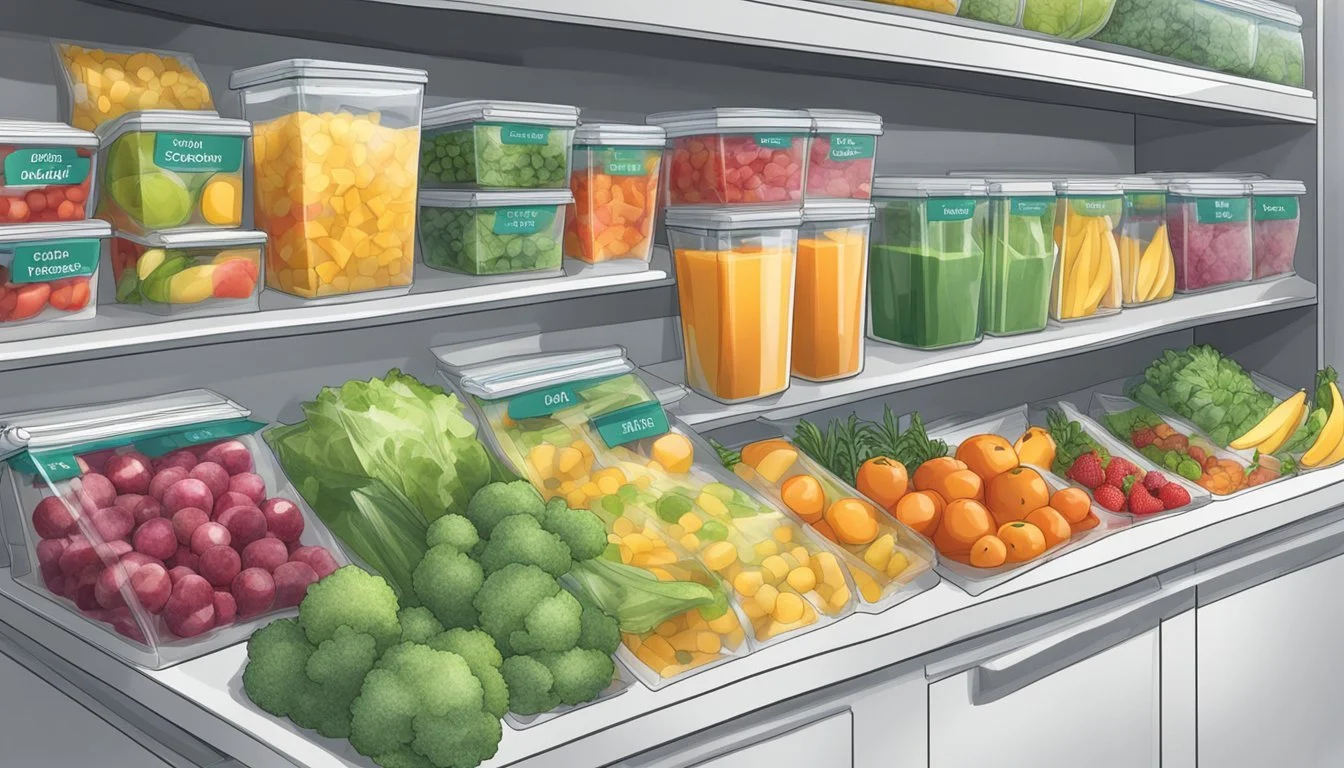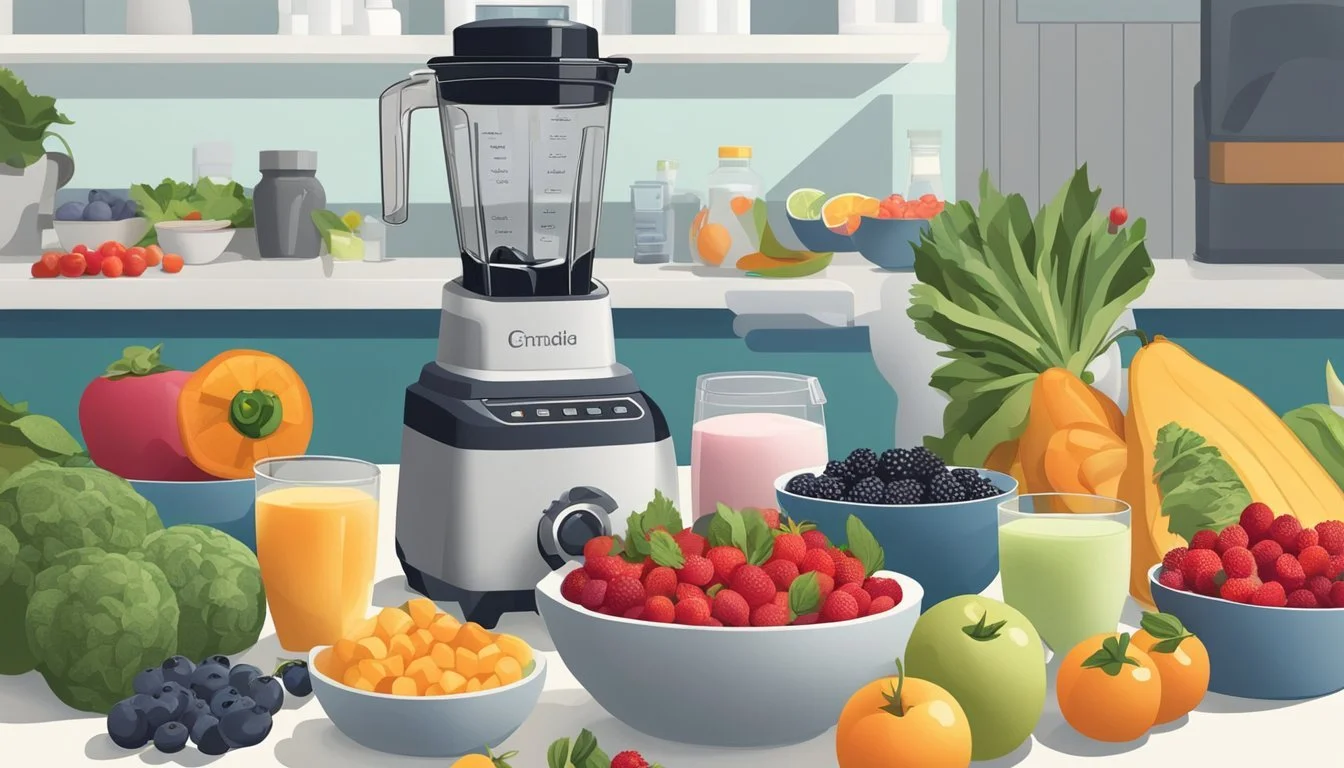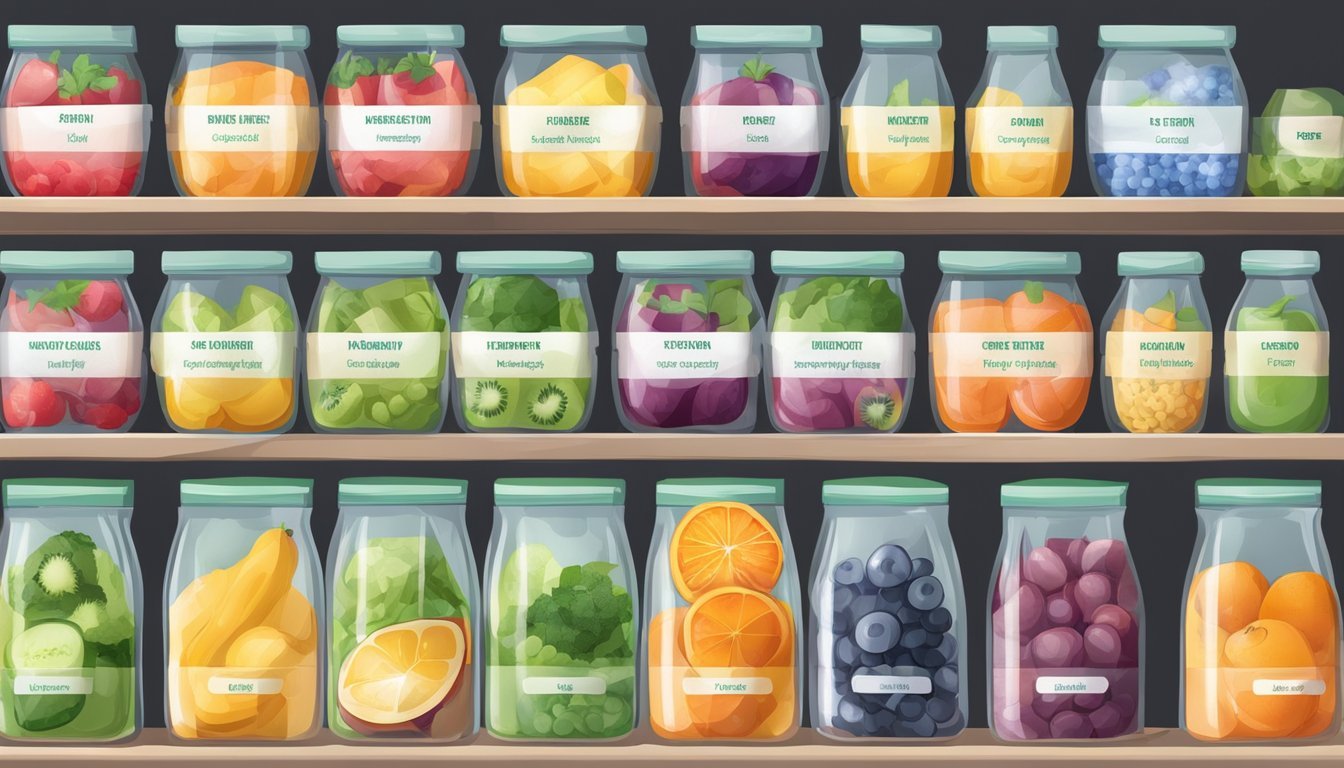How to Freeze Smoothie Packs for Easy Prep
Quick Guide to Efficient Blending
Freezing smoothie packs is a practical method to ensure a healthy and quick option for breakfast or snacks. These packs contain a combination of fruits, vegetables, and sometimes protein sources that can be quickly blended with a liquid base. The cost-effectiveness of homemade packs is notable compared to the expense of commercial smoothie subscriptions.
The preparation of these packs involves pre-portioning and freezing the ingredients. Users have the flexibility to customize the contents, controlling both the nutritional value and taste to their preference. These packs can remain in the freezer for extended periods, typically up to two months, reducing food waste and saving time during busy mornings or when a swift snack is needed.
Utilizing smoothie packs simplifies the process of maintaining a nutritious diet. Individuals can blend a well-rounded smoothie in minutes without the hassle of daily preparation. This simplifies meal planning, especially for those who are health-conscious but have a tight schedule.
Benefits of Preparing Smoothie Packs
Preparing smoothie packs in advance is a practical approach that brings efficiency to one's daily routine. They offer a convenient way to ensure a person gets a nutrient-rich meal without the hassle of daily prep work.
Time-saving: One assembles all the necessary ingredients for their smoothie at once, rather than sourcing and preparing them each morning. This can free up precious time during busy mornings.
Portion Control: Pre-measured ingredients help maintain consistency in serving size, which is advantageous for those monitoring their intake for weight management or nutritional reasons.
Meal Prep Efficiency: Smoothie packs are a great addition to meal prep, streamlining the process of planning and preparing healthy meals.
Nutrient Preservation: Freezing fresh fruits and vegetables helps lock in vitamins, fiber, and antioxidants. A person can take advantage of seasonal produce, preserving its quality and nutritional value.
Variety: It's simple to mix and match ingredients, which can help someone avoid getting stuck in a dietary rut. One might create different packs with an array of ingredients, ensuring a diverse intake of nutrients and antioxidants for a balanced diet.
Waste Reduction: Utilizing smoothie packs can lead to less food waste. Ingredients are used more efficiently, and a person can also freeze near-expiry items to extend their use.
Customization: Individuals can tailor their smoothie packs to their dietary needs and flavor preferences, adding specific fruits, greens, sources of fiber, and proteins that fit their health goals.
In summary, the benefits of preparing smoothie packs are both practical and nutritional, offering a strategic way to maintain a healthy lifestyle with minimal effort.
Choosing the Right Ingredients
When preparing freezer smoothie packs, selecting the right combination of ingredients is crucial for balanced nutrition and optimal taste. One should aim for a mix of fruits, vegetables, proteins, and fats, and consider desired sweetness and flavors.
Selecting Fruits and Vegetables
Fruit Choices:
Berries: Strawberries, blueberries, raspberries
Tropical fruits: Banana, mango, pineapple
Combine fruits for variety and antioxidant benefits
Vegetables:
Leafy greens: Spinach, kale and other greens are nutrient-rich and blend well
Vegetables provide fiber and vitamins with minimal calories
Including Proteins and Fats
Proteins:
Chia seeds, flaxseeds: These are excellent plant-based protein sources and offer omega-3 fatty acids
Note: Protein helps to keep one satiated for longer periods
Fats:
Nuts and seeds: Almond butter, peanut butter
Healthy fats are essential for nutrient absorption and providing long-lasting energy
Adding Sweeteners and Flavors
Sweeteners:
Natural options like honey can add a touch of sweetness without artificial additives
Use sparingly to control the overall sugar content
Flavors:
Spirulina: This adds not only a unique taste but also a boost of nutrients
Experiment with different flavors to find what satisfies one's palate while still focusing on health benefits
Assembling Your Smoothie Packs
Creating smoothie packs ahead of time simplifies the smoothie-making process and ensures you have the necessary ingredients on hand when you need them. It's crucial to layer the ingredients correctly, portion them suitably for a single serving, and choose the right containers for freezing.
Layering Ingredients
When assembling smoothie packs, one should layer the ingredients to ensure easy blending. The optimal sequence in a freezer bag or mason jar starts with fruits and vegetables at the bottom, followed by any dry goods like seeds or nuts. If using leafy greens, they should be placed on top to prevent clumping. One can use:
Frozen fruit: acts as the icy base and keeps other ingredients fresh.
Leafy greens: should not come in contact with moist ingredients until blending to preserve texture.
Portion Sizing
For single servings, one should measure out fruits and vegetables so they equate to roughly one cup combined, accounting for the fact that ingredients will expand slightly once frozen. Precise measuring ensures consistency in taste and nutrition for each smoothie. Here's a quick guide:
Ingredient Suggested Portion Frozen fruit 1/2 to 3/4 cup Leafy greens 1/2 cup Seeds or nuts 1 to 2 tablespoons
Choosing Freezer Containers
The choice of container for one's smoothie packs is important for preserving freshness and saving space. They can use either freezer bags or mason jars. Freezer bags are space-efficient; they can lie flat in the freezer. Mason jars are a sturdier option and can be reused. If incorporating liquids like kefir or juice, freezing them in ice cube trays first and then adding to the packs helps maintain texture upon blending.
Packing for Optimal Freshness
When preparing smoothie packs for freezing, the goal is to maintain the freshness and nutritional integrity of the ingredients. Antioxidants and vitamins are sensitive to exposure and preservation methods directly impact their retention.
Selecting Ingredients: Fresh fruits and vegetables are rich in antioxidants and vitamins. They should choose ripe, unblemished produce to maximize these nutrients.
Prepping Produce:
Wash thoroughly.
Pat dry to reduce ice crystal formation.
Cut into uniform sizes for even freezing.
Layering Strategy: To prevent nutrients degradation and ensure better blending:
Place leafy greens at the top of the pack.
Add fruits and veggies next.
Herbs and seeds can follow.
Container Choice: For freshness, they should use airtight, freezer-safe bags or containers. Removing as much air as possible reduces the risk of freezer burn.
Timing: Ingredients should be frozen promptly after preparation. Vitamins are preserved best when produce is frozen quickly, which reduces the breakdown of nutrients.
Labeling: Clearly labeling with the contents and date will help them keep track of freshness and make sure they are used within three months for optimal nutrient retention.
By following these packing techniques, they ensure that their smoothie packs are not only convenient but also retain the essential nutrients for a healthy boost.
Liquid Choices for Blending
Selecting the right liquid base for a smoothie pack is crucial as it affects the smoothie's texture and flavor. The choice of liquid can range from various milks and milk alternatives to juices and plain water, all contributing uniquely to the final taste.
Milk and Milk Alternatives
Milk is a classic choice for smoothies, offering a creamy texture and a subtle sweetness. Whole milk provides a rich, full-bodied option, while skim or low-fat milk gives a leaner result. For those looking for a non-dairy alternative, options include:
Almond milk: A low-calorie option with a nutty flavor.
Coconut milk: Imparts a tropical taste and creamy consistency.
Soy milk: A protein-rich alternative with a smooth taste.
Yogurt: Adds thickness and a tangy flavor, as well as additional protein.
These options cater to various dietary preferences and can be chosen based on nutritional goals or personal taste.
Juices and Water
For a lighter smoothie, one may opt for juices or water. Each juice brings a different set of vitamins and sweet profiles:
Orange juice: Offers a burst of citrus and vitamin C.
Coconut water: Provides electrolytes with a subtle sweetness.
Water can be used for the lowest-calorie option without adding any distinct flavor. It's best for those who want to highlight the taste of the smoothie pack's ingredients. When using juice, be mindful of the sugar content, as some juices can be high in sugars.
Thawing and Blending Techniques
When using frozen smoothie packs, one must understand the right methods for thawing and blending to achieve the perfect texture and temperature for consumption.
From Freezer to Blender
Before blending, it's best not to fully defrost the frozen ingredients as they contribute to the smoothie's chilled quality. It's advisable to let the pack sit at room temperature for a few minutes to slightly soften the contents, which aids in protecting the blades and motor of the blender, especially if it's not a high-powered model like a Vitamix or similar high-speed blender. For those who have powerful blenders, they can handle the smoothie packs directly from the freezer without the need for any thawing.
Creating the Perfect Consistency
To create a smoothie with ideal consistency, start by adding liquid to the blender first. This could be water, milk, or juice, depending on the recipe. The liquid creates a vortex that helps to draw in the solid ingredients efficiently. For those wishing for a creamier texture, add a few cubes of frozen yogurt or kefir. When using a standard blender, one might have to stop intermittently to stir the ingredients or use a tamper. However, for those with a high-powered blender, this process will be more straightforward, often requiring no additional intervention to reach the perfect smoothie consistency.
Customization and Variations
Creating smoothie packs in advance is an efficient way to ensure a quick and nutritious start to one's day. By customizing ingredients, individuals can cater to personal taste preferences and dietary needs while also experimenting with a variety of flavors and nutrition profiles.
Adapting to Dietary Needs
For those following vegan or dairy-free diets, substituting dairy ingredients is quite simple. Greek yogurt, commonly used for its creaminess and protein, can be replaced with dairy-free yogurts made from almond, soy, or coconut bases. Those opting for gluten-free options can ensure no cross-contamination with ingredients such as oats by choosing certified gluten-free brands. Protein powders serve as an effective way to boost protein intake, and plant-based powders are readily available for vegans.
Detox enthusiasts can include ingredients like chia seeds for added fiber or spirulina for a dose of antioxidants and vitamins. Substitution tables like the one below can guide users through creating custom packs:
Traditional Ingredient Dietary Need Substitution Dairy Yogurt Vegan Plant-based Yogurt Whey Protein Powder Vegan Plant-based Powder Honey Vegan Maple Syrup Regular Milk Dairy-Free Almond/Soy Milk Granola (with gluten) Gluten-Free Gluten-Free Oats
Seasonal and Exotic Combinations
One can blend a tropical smoothie by combining mango, pineapple, and banana with a splash of coconut water. Adding avocado introduces a creamy texture rich in healthy fats. For those who prefer a green smoothie, ingredients like spinach, kale, or arugula can be pre-packed, along with apple slices or cucumber for a refreshing twist. To introduce exotic flavors, one might integrate dragon fruit or acai berries into their packs.
To further customize these combinations, users can consider the following:
For a protein boost, incorporate a scoop of protein powder according to personal dietary preferences.
Those seeking additional antioxidants can sprinkle in a teaspoon of spirulina powder.
In colder months, one may opt for seasonal fruits like apples and pears to create a smoothie pack that reflects the season's best offerings.
By creating personalized smoothie packs, individuals can enjoy a diverse array of flavors while also meeting their specific dietary requirements.
Storing and Labeling for Organization
When preparing smoothie packs for freezing, clear organization and proper storage is crucial. Individuals should use freezer-safe bags or mason jars, ensuring that all containers are sealed tightly. This will prevent freezer burn and preserve the flavor and nutrients of the ingredients.
Labels are a vital component for an efficient system. They should include the contents of the pack, an estimate of nutritional information if needed, and the date of freezing. Labels enable quick identification and help in consuming older packs first, optimizing the use of resources and reducing waste.
To maintain systematic storage, one could arrange smoothie packs in the order of their estimated use-by dates. Freezer-safe bags offer the advantage of lying flat, saving space and allowing for tidier stacking. For those using mason jars, it is recommended to leave adequate headspace as liquids expand when frozen.
Below is a simple table to help organize smoothie packs:
Container Type Label Details Storage Tips Freezer Bags Date, Ingredients Lay flat & stack by date Mason Jars Nutritional Estimate, Date Upright storage, leave headspace
In summary, properly storing and labeling smoothie packs is straightforward. By being meticulous with this process, individuals can ensure a practical and time-saving method for smoothie preparation.
Smoothie Recipe Inspirations
A well-crafted smoothie recipe can elevate the experience of enjoying a nutritious drink. Whether one seeks the comfort of classic flavors or the thrill of innovative combinations, the following recipes serve as inspirations for creating delicious smoothie packs.
Classic Smoothie Recipes
For the traditionalists, classic smoothie recipes form the backbone of their smoothie repertoire. Reliability and time-tested flavors define these concoctions:
Combine 1 cup of mixed berries (strawberries, blueberries, raspberries)
Add 1 banana for creaminess
1/2 cup of Greek yogurt for a protein boost.
Chocolate Peanut Butter Smoothie:
Blend 2 tablespoons of peanut butter with 1 banana
Include 1 tablespoon of cocoa powder
Sweeten with a drizzle of honey.
Innovative Combinations
For those who fancy being adventurous with their palate, innovative combinations introduce an exciting twist to their daily routine:
Mix 1 cup of coconut water with 1/2 cup of Greek yogurt
Add 1/2 cup of frozen pineapple for a tropical flair.
Tropical Green Smoothie:
Use 1 cup of spinach as a nutrient-dense base
Blend with 1 cup of tropical fruits like mango or kiwi
Incorporate coconut water for hydration and a tropical taste.
Blueberry Muffin Smoothie:
Start with 1 cup of frozen blueberries
Add a handful of oats to mimic the muffin experience
Include 1/2 cup of vanilla yogurt.
Piña Colada:
Blend 1 cup of frozen pineapple with 1/2 cup of coconut milk
Sweeten with a touch of honey
Optional: add a small amount of shredded coconut for extra texture and flavor.
These recipes serve as starting points. One can adjust the quantities and ingredients to personal preference and nutritional needs.
Health and Nutrition Information
When preparing freeze smoothie packs, individuals are in control of selecting ingredients, ensuring that each smoothie is packed with nutritional benefits. Real food components like fruits, vegetables, nuts, and seeds contribute a wide array of nutrients that are essential for a balanced diet.
Protein: Adding a scoop of protein powder, or a dollop of nut butter increases the protein content, supporting muscle repair and growth.
Fiber: Ingredients such as leafy greens, chia seeds, and fruits add fiber to the diet, aiding in digestion and providing a sense of fullness.
Antioxidants: Berries and other colorful fruits offer antioxidants, which combat oxidative stress and may reduce the risk of chronic disease.
Sodium: Smoothie packs usually contain minimal sodium, making them a heart-healthy choice, especially when compared to processed snacks.
To give a clearer picture of the nutrition information of a typical smoothie pack, consider the following example:
Nutrient Amount per Serving Calories 300 kcal Carbohydrates 34 g Protein 8 g Fat 10 g Fiber 5 g Sodium 200 mg
Nutrient values will vary based on the specific ingredients used. They should opt for a balance of macronutrients and a variety of colors to maximize the range of nutrients in their diet. With careful selection, smoothie packs are not only convenient but also a powerhouse of health benefits.
Tips for Serving Smoothies to Kids and Adults
For both children and adults, smoothies are a versatile and nutritious option that can be tailored to suit individual tastes. Here are some tips to make smoothies appealing to all ages:
For Kids:
Sweetness: Since many kids have a preference for sweeter tastes, consider adding natural sweeteners like honey, agave nectar, or ripe bananas.
Flavors: Opt for familiar flavors such as strawberry-banana or chocolate-peanut butter. These are likely to be favorites among younger audiences.
Presentation: Serve in colorful cups with fun straws or top with a sprinkle of granola to make the smoothie visually engaging for children.
For Adults:
Sweetness: Adults may prefer less sugar. Highlight the fruit's natural sweetness or add a touch of honey for moderation.
Flavors: Adults may appreciate more complex flavor profiles. Combining kale or spinach with fruits or introducing flavors like matcha or ginger can be inviting.
Snacks: Turn a smoothie into a more satisfying snack for adults by adding protein sources such as Greek yogurt, nuts, or protein powder.
Serving Tips:
For Kids For Adults Use natural sweeteners sparingly. Offer less sweet, more nuanced flavors. Stick to simple, well-liked flavors. Incorporate leafy greens and superfoods. Make the presentation playful. Add protein to support muscle health.
Always ensure that smoothies are served at an appropriate temperature; a lukewarm smoothie may be less appealing. Using frozen ingredients can also keep the drink cool and refreshing. When serving to kids, safety is paramount, so ensure that all ingredients are suitable for their age and that the serving size is appropriate.








